|
 |
|
 |
|
 |
 |
| |
16:9 in English: Eat your neighbour
By IB JOHANSEN
The zombie film keeps coming back to life. A long-standing favourite in low budget and ’independent’ production, the genre has moved up the production cost ladder a notch or two since George A. Romero’s classic Night of the Living Dead (1968). Surprisingly, the countless parodic zombie films (including Braindead (1992), Shaun of the Dead (2004) and Zombieland (2009)) have done little to deter more serious attempts at the genre including the recent remake of Romero’s The Crazies (Breck Eisner, 2010) and the release of the sixth instalment of Romero’s Dead-series, Survival of the Dead (2010). I take this opportunity to reflect on Romero's zombie movies – notably the Dead-series – which are central to the history of the genre.
Zombies in Folklore and Underground Culture
In popular culture zombies are, to begin with, clearly associated with voodoo/hoodoo in Haiti and neighbouring regions. In the Afro-American writer and anthropologist Zora Neale Hurston's field work in Haiti and elsewhere in the Caribbean region, recapitulated in her Tell My Horse (1938), a whole chapter of her study (Chapter XIII) is devoted to these beings, defined by Hurston in the following manner: "This is the way Zombies are spoken of [in Haiti]: They are the bodies without souls. The living dead. Once they were dead, and after that they were called back to life again" (Hurston 1995, p. 456). In Haitian folklore zombies are frequently used as labourers in the field, and they are usually (to begin with) controlled by a "Bocor", i.e. a wizard: "Maybe a plantation owner has come to the Bocor to 'buy' some laborers, or perhaps an enemy wants the utmost in revenge. He makes an agreement with the Bocor to do the work... [subsequently the Bocor visits the home of his victim]. There he places his lips to the crack of the door and sucks out the soul of the victim and rides off in all speed. Soon the victim falls ill [and later dies, and after the funeral the Bocor returns for his victim]" (ibid., p. 458, my ellipsis). |
|

Fig. 1. A shot from Romero’s Land of the Dead (2005). |
|
| |
Zora Neale Hurston even managed to get access to a zombie, who "had been found on the road and was now at the hospital at Gonaives" (ibid., p. 468). Hurston was allowed to take photos of this being, "[a]nd the sight was dreadful. That blank face with the dead eyes. The eyelids were white all around the eyes as if they had been burned with acid (fig 2). It was pronounced enough to come out in the picture" (ibid., p. 469). According to the records, this woman (Felicia Felix-Mentor) had died in 1907, but suddenly returned to the surface of the earth in October 1936 (!). Hurston's photo of this allegedly altogether expressionless being is, as a matter of fact, reproduced in Zora Neale Hurston's Folklore, Memoirs, and Other Writings (The Library of America, 1995, p. 471).
In underground culture zombies play a somewhat different role. Here the emphasis is regularly on the zombie as an abject being, i.e. as a creature who has nearly altogether lost its human features (all traces of "the human form divine", to quote William Blake) (1); and its unappetizing, cannibalistic eating habits are stressed over and over again. The notion of abjection - highly relevant in connection with the appearance and the predatory behaviour of the zombie - is defined in the following manner in Julia Kristeva's classic study Powers of Horror (1980, 1982), where the disturbing and sickening aspects of the abject are focused (its improper and unclean qualities): "It is [however]...not lack of cleanliness or health that causes abjection but what disturbs identity, system, order. What does not respect borders, positions, rules. The in-between, the ambiguous, the composite" (p. 4, my ellipsis). Zombies as living-dead certainly fit into this categorization of the "in-between" or "composite", etc. Furthermore, abjection is explicitly linked up with the (Freudian) death instinct, for "[a]bjection is a resurrection that has gone through death (of the ego). It is an alchemy that transforms death drive into a start of life, of new significance" (ibid., p. 15).
Michael T. Carroll notices, in connection with a comment on the structural characteristics of splatter movies and their historical background (among other things in religious culture), that "[t]he most elemental factor is the overdetermination that exists in the bloody spectacle, the presence of the contrary qualities of bodily death, spiritual transcendence, and sexual release, a heady admixture which gives such scenes [as we find them, for instance, in Tobe Hooper's The Texas Chainsaw Massacre,1974, or George A. Romero's Night of the Living Dead, 1968] the power to transfix the human gaze and thus make them spectacular, worthy of intense focalization" (2000, p. 229). In this manner death, sex, and transcendence appear to merge - which is certainly one of the essential characteristics of precisely splatter movies. However this may be, the transcendental world appears to be an evil Beyond, a death-infected Otherworld, where primal urges such as homicidal impulses and immoderate, cannibalistic appetites, etc., altogether govern the creatures in question (i.e. the "ghouls" or zombies). |
|

Fig. 2. Hurston’s photograph of Felicia Felix-Mentor.
(1) William Blake's poem "The Divine Image", plate 18: "For Mercy has a human heart / Pity, a human face: / And Love, the human form divine, / And Peace, the human dress". |
|
| |
In this connection it is likewise worthwhile bearing in mind that according to Milan Kundera, "[d]eath has two faces [and consequently, the human fear of death, has likewise two faces]. One is nonbeing; the other is the terrifying material being that is the corpse" (1981, p. 171) (2). In splatter movies - including zombie movies - it is invariably the latter fear (i.e. the fear of the corpse and its would-be macabre and sinister qualities) that dominates the plot...
Recently, zombies have also invaded public spaces as a subcultural phenomenon in connection with so-called zombie walks, where participants dress up in zombie costumes and paint their faces in the zombie manner; these events usually take place in urban centres, especially in North America, and occasionally in order to promote film festivals or for charity purposes. Furthermore, we must bear in mind that within the last twenty years or so zombies have also been taken up as a philosophical problem, where the contested issue has been "whether, and perhaps how, consciousness might be a phenomenon independent from or non-essential to the processes of the nervous system and associated behaviour. Would it be possible that a computer, or some hypothetical being, might have all the behavioural attributes and powers of a conscious human yet lack the self-awareness, and awareness of awareness that we call consciousness?" (Hart 1995, p. 1). This would imply "at least the theoretical and philosophical existence of 'zombies', beings behaviourally identical to humans, yet lacking consciousness" (ibid.). |
|
(2) Michael T. Carroll also refers to Kundera's dictum in "The Bloody Spectacle" (2000, p. 230). |
|
| |
George A. Romero's Night of the Living Dead (1968)
In Bret Easton Ellis' psycho-thriller American Psycho (1991) the approaching mental breakdown of the protagonist near the end of the novel is accompanied by "[l]yrics to Madonna songs [that] keep intruding, bursting into [his] head..., but then a phrase that fills [him] with nameless dread keeps interrupting the Madonna songs - isolated farmhouse constantly returns to [him], over and over" (p. 383, my ellipsis, Ellis' italics). Apparently, Patrick Bateman is here reminded of the setting of George A. Romero's first zombie movie: Night of the Living Dead (1968), where a small group of people seek shelter in precisely such a building, attempting to ward off a zombie invasion by turning the farmhouse into a veritable fortress (fig. 3); as a matter of fact, in American Psycho the paragraph quoted above ends up referring explicitly to "talk of zombies, the public mood, increasing randomness, vast chasms of misunderstanding" (ibid., my italics), summarizing in this haphazard manner the overall degeneracy of life in the (post)modern world (fig. 4).
George A. Romero's Night of the Living Dead has frequently been noticed for its spectacularly critical comment on patriarchal culture and its psychological paraphernalia. According to Robin Wood, "[t]he zombies' attacks...have their origin in (are the physical projection of) psychic tensions that are the product of patriarchal male/female or familial relationships" (2003 [1986], p. 103, my ellipsis). And as a matter of fact, the film explicitly thematizes the breakdown of the nuclear family: brother is separated from sister, and within a father-mother-daughter triad the girl-turned-zombie starts devouring her own father and hacks her mother to death (fig. 5).
At the end of the movie the heroine is dragged out of the barricaded farmhouse by a horde of zombies led by her own (un)dead brother! The pale, fragile heroine (Barbra) is clearly one of those "heroines preyed on by unspeakable terrors" that we come across so often in Gothic fiction (Punter 1980, p. 1), i.e. she is one of those "beautiful, weak, sublime, helpless females crouching on floors, hiding behind doors, dominated by brutal lascivious males, kidnapped, murdered or worse, their virtue always at stake, their beauty their great misfortune..." (Aguirre 1995, pp. 57-58, my ellipsis). But interesting enough, Romero later revised this stereotypical vision of a femme fragile in his script for a remake of the film, directed by Tom Savini (Night of the Living Dead, 1990), where the heroine is recast as a much more active and aggressive character, and where Barbra is actually the only person from the house alive at the end of the movie (Grant 1996, p. 203).
In terms of genre Romero's film may be defined as a splatter movie (McCarty 1984, pp. 61 ff), (3) or we may adopt Stephen King's notion of "techno-horror"; for "[t]here is nothing supernatural about all those dead folks getting up and walking; it happened because a space probe to Venus picked up some weird corpse-reviving radiation on its way back home" (1991, p. 184). Thus this type of film may be categorized as a subspecies of the science-fiction movie.
Consumerism at the End of Its Tether: Dawn of the Dead (1978)
Whereas the initial setting of Romero's Night is a country churchyard, and most of the subsequent events take place in a barricaded farmhouse, Dawn of the Dead contrariwise focuses on one of the icons of (post)modern consumer culture: the mall! (fig. 6) I.e. the rural - or pastoral - past appears to be left behind for good. According to Stephen Harper, one of the fans of Dawn "relates how he overheard a woman commenting to her friend in a New York City mall: 'Oh, my god! It's just like Dawn of the Dead! All of these shoppers look like zombies walking about the place!" (Harper 2002, p. 9). In Romero's Dawn the zombies have actually invaded precisely such a mall - as if they were still "normal" consumers, not man-eating "ghouls"! And Romero appears to ask the moviegoers: what's the difference?
The four human survivors of the film are, to begin with, literally placed above the zombie-infested mall (landing in their chopper on its roof); and they subsequently attempt to take over the place. When this has been carried out successfully, the film presents us with what Harper terms "a reworking of the medieval legend of the Land of Cockayne, an allegory of human sloth and greed in an Edenic land of plenty" (ibid., p. 5). Carnivalesque abundance thus appears to be within reach; but at the same time the needy poor - in this case represented by the zombies - permanently threaten this overstocked consumer paradise from within and below! And when the group of survivors have later warded off an attack on the mall by a gang of bikers (fig. 7), the living dead once more invade the mall: desire is in their eyes, but at the same time the overflow of commodities is of no practical use to them. It seems as if the circuit of commercial capitalism has come to a definitive standstill. In spite of this entropic pull in the wrong direction "the cinematic zombie [nevertheless] terrifies because it is a reflection of modern-day commercial society, propelled only by its need to perpetually consume" (Lauro & Embry 2008, p. 99). |
|
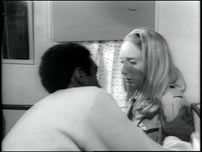
Fig. 3. Ben and Barbra are the first two of the group that we meet – and the film’s main characters.
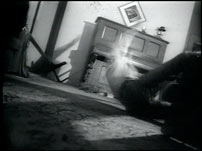
Fig. 4. The ‘vast chasm of misunderstanding’ culminates at the end where our hero, Ben, is taken for a zombie and shot by a group of gun happy white men.
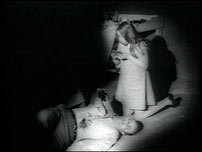
Fig. 5. The zombie daughter eating her father’s arm in Night of the Living Dead (1968).
(3) Actually, Romero himself coined the term "splatter cinema" to characterize his own oeuvre, (cf. McCarty 1984, p. 67.).
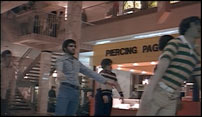
Fig. 6. Zombies in the mall (Dawn of the Dead, 1978).
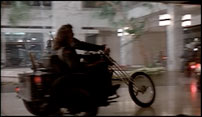
Fig. 7. Bikers in the mall. |
|
| |
At this point it turns out that the female character (Fran, a girl working at a television station) has lost her fiancé (Stephen), who is turned into a zombie (and who is eventually shot in the head by the sole male survivor, the Puerto Rican Peter). A little earlier the fourth member of the group (Roger) has voluntarily let Peter shoot him, after he has succumbed to another zombie-bite (fig. 8). At the end of the movie Fran and Peter leave the mall in the helicopter, even if they do not really know how long their fuel is going to last! Thus there is not very much hope left for the two survivors - though Fran's pregnancy must count as a positive sign. Anyway, it is significant that both survivors (a woman and a male Puerto Rican) are underprivileged characters, who are by definition positioned far from the American power élite and its high-class acolytes. And Fran has learned to fly a chopper just in time! (fig. 9). In this manner she certainly turns out to be much more active and energetic than the near-catatonic heroine of the first zombie movie (Barbra).
In Peter's case there is even an explicit link to Caribbean folk culture (pace Zora Neale Hurston), insofar as he refers to "voodoo" and quotes his own grandfather stating with regard to the rise of zombies in the modern world: "When there is no more room in hell, the dead will walk the earth!"
Zombiehood and Military Megalomania: Day of the Dead (1985)
In Romero's trilogy (consisting of Night, Dawn, and Day [of the Dead]) we notice - as it has been pointed out by Lauro and Embry - that "[t]he zombie is currently understood as simultaneously powerless and powerful, slave and slave rebellion..." (ibid., p. 98, my ellipsis); actually, it is significant that it was precisely in Haiti that the first successful slave rebellion took place, i.e. around the year 1800 (Toussaint), and Haitian zombie lore can be traced back to precisely this era. Nevertheless, from Night to Day the zombies do become progressively more powerful, until they finally appear to undermine all existing power structures at one fell swoop in Day of the Dead. At the same time the splatter elements become more and more conspicuous, culminating in Day in the literal tearing to shreds of the last members of the military contingent originally set up to support scientific research into the nature of zombiehood in an underground laboratory, but long since cut off from all contact with its employer (Washington). According to Barry Keith Grant, Captain Rhodes in this movie "lives just long enough to see his lower body torn off and dragged away by zombies" (1996, p. 210), prior to being devoured by all these gaping mouths! (fig. 10).
In all three films the power structure is triangular: in Night there are the human survivors, the zombies and the sheriff's posse, killing off zombies by the dozen, but by mistake also the last (Afro-American) survivor in the farmhouse (Ben), who ends up being burned in the same holocaust as the "ghouls". In Dawn the triad consists of the human survivors (first four, then two), the zombies, and the bikers, i.e. a bunch of rednecks, whose ranks are decimated both by the living dead and by the human quartet, whose fortress they have attacked (the mall). Finally, the same kind of triad can be found in Day, where the scientists and their aids make up the "human" group, where the zombies are being "trained" by the highly persuasive Dr. Logan (here called "Frankenstein") (fig. 11), and where the rednecks or macho militants are the military crew itself, led by the ruthless Rhodes, who shoots "Frankenstein" in cold blood, when he finds out that this mad scientist has domesticated his favourite zombie, "Bub", by feeding him the entrails of dead soldiers! (fig. 12) Actually, "Bub" has undergone a veritable learning process under the aegis of his mentor - and he has even learned how to fire a pistol, which he uses to shoot the captain when he gets the chance to do so: unlike the other zombies Bub also turns out to be able to feel grief and cries, when he finds Logan's dead body (!). Anyway, official culture in all three films appears to be submitted to a scathing criticism, and the outsiders/outlaws and their aids appear to have a greater chance with regard to surviving the zombie attack.
According to Logan in Day, "they [i.e. the zombies] are us", viz. an "extension" of human beings. Nevertheless, in the end the three sole survivors (the scientist Sarah, the pilot John, and the radio telegraphist Bill) can only rescue themselves by fleeing from their underground bunker - now conquered by the zombies - and take up their abode on a remote desert island (fig. 13-14). Thus the film ends on a pastoral note, but we must bear in mind that such a paradisaical shelter was already envisaged as a desirable destination by the characters in Romero's Dawn, where we do not know if they ever reach their goal; and in Zack Snyder's remake of Dawn (2004) the island in question turns out to be just as zombie-infested as the mainland!
Epilogue
After Day of the Dead Romero returned to his zombies in films like Land of the Dead (2005), Diary of the Dead (2007), and Survival of the Dead (2010). In Land of the Dead the power structure of the establishment (here the tycoon's alias Dennis Hopper's skyscraper empire) is once more undermined by the invading hordes of zombies (fig. 15); but at the same time the "human" survivors turn out to have stronger ties to the urban underclass in its poorly built shanty-town than it happened to be the case in Romero's earlier films (fig. 16). In Diary of the Dead the media world - including blogging with all its sidekicks - is deconstructed in a thoroughgoing manner; but in this case the surviving main characters end up being incarcerated within the confines of a monstrous manor-house, where they have sought shelter in the panic room! (fig. 17) And in Survival of the Dead (which I have not yet had the chance to see) we follow some of the minor characters of Diary (thievish National Guardsmen) and witness a family feud within an isolated community, where the question is: is it possible to "love" even a family member who has become a zombie - and should we keep him or her "alive" in the hope that there might one day be a cure for this deep-rooted "malfunction"? (fig. 18) |
|
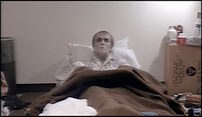
Fig. 8. Roger’s death.
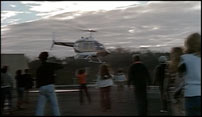
Fig. 9. Flying away from the mall.
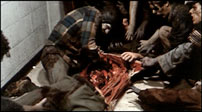
Fig. 10. Rhodes’ death in Day of the Dead (1985).
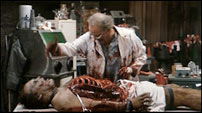
Fig. 11. Logan and the zombie in Day of the Dead (1985).
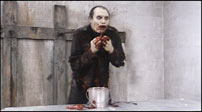
Fig. 12. Bub’s reward.

Fig. 13. Sarah on the desert island.
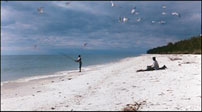
Fig. 14. John and Bill on the desert island.

Fig. 15. Dennis Hopper as tycoon in Land of the Dead (2005).

Fig. 16. Shantytown in Land of the Dead (2005).
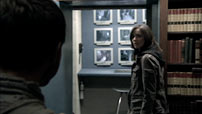
Fig. 17. The panic room in Diary of the Dead (2007).
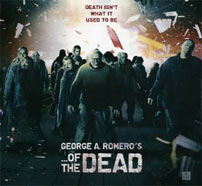
Fig. 18. Survival of the Dead (2010). |
|
 |
 |
 |
 |
 |
|
 |
 |
 |
| |
Facts
Referenced literature
Aguirre, Manuel. "The Roots of the Symbolic Role of Woman in
Gothic Literature", in: Exhibited by Candlelight. Edited by Valeria Tinkler-Villani and Peter Davidson, with Jane Stevenson (Amsterdam-Atlanta, GA: Rodopi, 1995).
Blake, William. "The Divine Image", in: Songs of Innocence and of Experience (1789-1794), [w]ith an introduction and commentary by Geoffrey Keynes (London: Oxford University
Press, 1970).
Carroll, Michael T. "The Bloody Spectacle: Mishima, the Sacred
Heart, Hogarth, Cronenberg, and the Entrails of Culture", in: Phenomenological Approaches to Popular Culture, edited by
Michael T. Carroll and Eddie Tafoya (Bowling Green, Ohio:
Bowling Green State University Popular Press, 2000).
Ellis, Bret Easton. American Psycho (London: Picador, Pan Books,
1991).
Grant, Barry Keith. "Taking Back The Night of the Living Dead:
George Romero, Feminism, and the Horror Film", in: The Dread of Difference. Gender and the Horror Film. Edited by
Barry Keith Grant (Austin: University of Texas Press, 1996).
Harper, Stephen. "Zombies, Malls, and the Consumerism
Debate: George Romero's Dawn of the Dead", Americana: The Journal of American Popular Culture (1900-present), Vol.
1, Issue 2 (Fall 2002), see the internet version.
Hart, Charles T. "Yes, We Are Zombies, But We Can Become
Conscious!", The Journal of Consciousness Studies, 2(4),
1995, http://www.psychedelic-library.org/zombie.htm
Hurston, Zora Neale. Folklore, Memoirs, and Other Writings (New
York: The Library of America, 1995).
King, Stephen. Danse Macabre (London: Futura, 1991).
Kristeva, Julia. Powers of Horror. An Essay on Abjection. Translated by
Leon S. Roudiez (New York: Columbia University Press, 1982)
Kundera, Milan. The Book of Laughter and Forgetting. Translated
from the Czech by Michael Henry Heim (Harmondsworth,
Middlesex: Penguin Books, 1981).
Lauro, Sarah Juliet & Embry, Karen. "A Zombie Manifesto: The
Nonhuman Condition in the Era of Advanced Capitalism", boundary 2, Vol. 35, No. 1 (2008).
McCarty, John. Splatter Movies. Breaking the Last Taboo of the Screen (New York: St. Martin's Press, 1984).
Punter, David. The Literature of Terror. A History of Gothic Fictions from 1765 to the Present Day (London and New
York: Longman, 1980).
Wood, Robin. Hollywood from Vietnam to Reagan and Beyond.
Expanded and Revised Edition (New York: Columbia University Press, 1986, 2003). |
|
|
|
|
 |
 |
 |
 |
16:9 - juni 2010 - 8. årgang - nummer 37
Udgives med støtte fra Det Danske Filminstitut samt Kulturministeriets bevilling til almenkulturelle tidsskrifter.
ISSN: 1603-5194. Copyright © 2002-10. Alle rettigheder reserveret. |
11 |
|
|
 |
 |
|
|